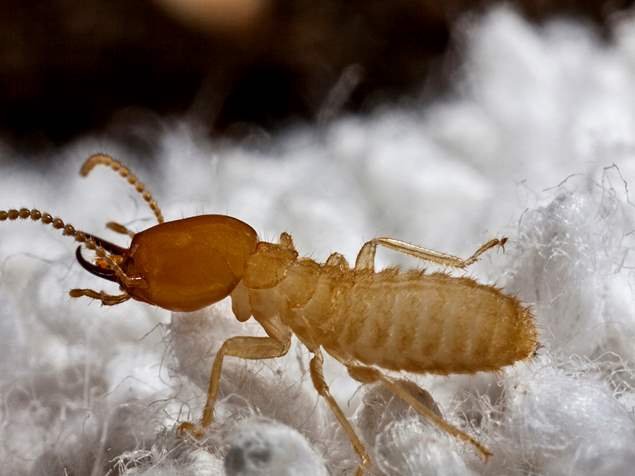Termites
So what are termites and what do they do? Termites are a rather unique species of insect that cause billions of dollars in damage each year in the U.S. They primarily feed on wood- (well, the cellulose that is contained in wood), but can also damage paper, books, and insulation. Termites are capable of injuring living trees and shrubs, but are more often a secondary invader of woody plants already in decline. Termites in this climate that are not winged are completely subterranean. The spring season is normally when large numbers of winged termites, known as "swarmers," tend to emerge from the ground as part of the colonies breeding process. Triggered by warmer temperatures and rainfall, the winged termites emerge from the colony and fly into the air. The swarmers then drop to the ground, shed their wings, pair off with a mate, and attempt to begin new colonies in the soil. The termite swarmers that emerge are not the the ones that cause the actual damage to wooden structures and only live for about a day. While the sight of them inside can be distressing, they are certainly treatable. Discovering winged termites indoors almost always indicates an infestation warranting treatment. Since the swarmers are attracted to light, they often are seen around windows and doors. People often confuse winged termites with ants, which will often swarm at the same time of year. Termites have straight antennae, a two segmented body with a uniformly thickened waist, and wings of equal size. Conversely, ants have elbowed antennae, a 3 segmented body, constricted waists, and a set of forewings that are longer than the hind wings.
Other signs of infestation are earthen “mud” tubes extending over any exposed are the termites may be traveling through. These mud tubes are typically about the diameter of a pencil, but sometimes can be thicker. Termites construct the tubes for shelter as they travel between their underground colonies and the structure since excessive light is harmful to the workers. Since in PA they are mostly subterranean, termite infestations are difficult to find and may be active for years before any sign is seen inside the home. Termite-damaged wood is hollowed out along the grain, with bits of dried mud or soil lining the feeding galleries. Wood damaged by moisture or other types of insects (carpenter ants, for example) will not look quite the same.


